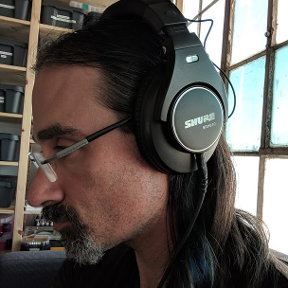Welcome to the Onshape forum! Ask questions and join in the discussions about everything Onshape.
First time visiting? Here are some places to start:- Looking for a certain topic? Check out the categories filter or use Search (upper right).
- Need support? Ask a question to our Community Support category.
- Please submit support tickets for bugs but you can request improvements in the Product Feedback category.
- Be respectful, on topic and if you see a problem, Flag it.
If you would like to contact our Community Manager personally, feel free to send a private message or an email.
Bringing Parts Studios Together
 sam_brown
Member Posts: 3 ✭
sam_brown
Member Posts: 3 ✭
I keep seeing variations of this question, but not quite what I'm after:
I made the basic mistake: I designed things that seemed unrelated in different Part Studios, and now I realize I want to bring them all together into a single Part Studio so that I can design an enclosure that they all snap or screw into.
I've tried using the "Derive" feature, as many discussions here recommend, but once I derive from a different sketch, the derived part is locked at the origin. I can't move it to where it would sit in the case, to design the case.
I've tried using the "Transform Pattern" custom feature, but it added its own spin onto my parts. Literally. It rotated them for no apparent reason.
Is there a way to recover from the blunder of building my parts in different part studios and getting them all into one, or do I have to restart from scratch, and rebuild them all in a single part studio?
I made the basic mistake: I designed things that seemed unrelated in different Part Studios, and now I realize I want to bring them all together into a single Part Studio so that I can design an enclosure that they all snap or screw into.
I've tried using the "Derive" feature, as many discussions here recommend, but once I derive from a different sketch, the derived part is locked at the origin. I can't move it to where it would sit in the case, to design the case.
I've tried using the "Transform Pattern" custom feature, but it added its own spin onto my parts. Literally. It rotated them for no apparent reason.
Is there a way to recover from the blunder of building my parts in different part studios and getting them all into one, or do I have to restart from scratch, and rebuild them all in a single part studio?
0
Comments
When I derive a part, I don't seem to be able to do anything to it. I can select the Transform option independently of the derived part, but then I don't seem to be able to select the derived part as the thing to transform. For everything I've tried, I can derive, or I can transform, but I have yet to find how to transform something I derived. Been trying an embarrassingly long time, and no way that I issue the command seems to be accepted.
Now we just need to work out where you're stuck. If you post a link to your document and describe what your aim is I'm sure someone will help
HWM-Water Ltd
Then after that, do work on bringing everything into an assembly. I think there are too many people stuck in partstudios and not moving to the world of desigining in an assembly (incontext). The "transform pattern" goes away when designing in the assembly.
A nice thing about OS is that assemblies inherit mates properly from children making the whole paradigm of top level assy, sub-assy & more sub-assy's work. Once you get there, you'll never go back to your old CAD system, this is a really impressive feature of OS.
To me the deliverable, or what you're working on should be an assembly not a partstudio.
Good luck and welcome OS.
Good luck!
Twitter: @bradleysauln